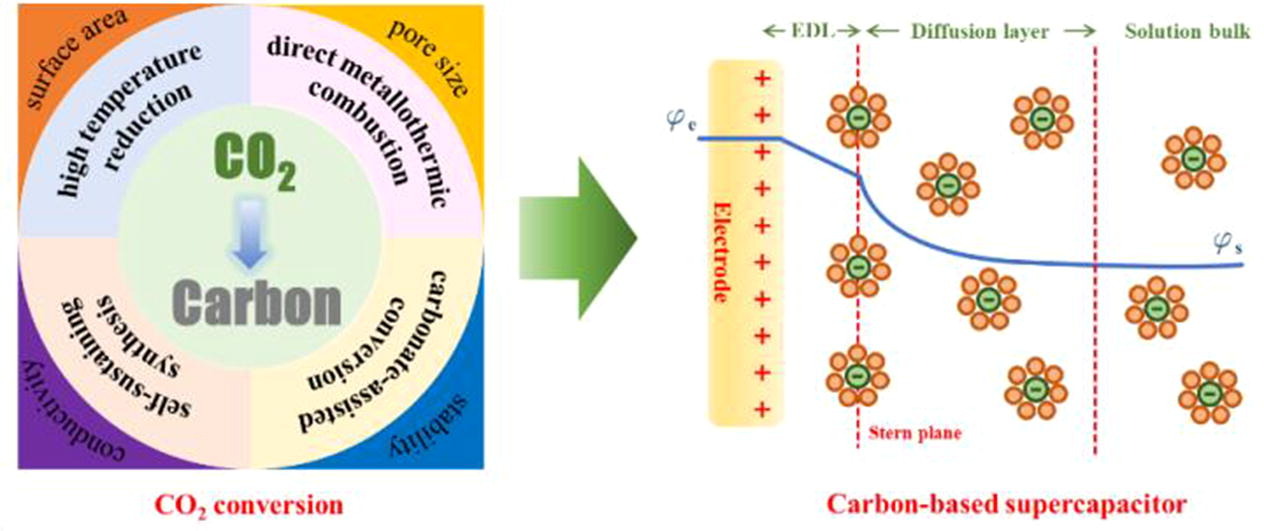C. Li, X. Zhang*, K. Wang, F.Y. Su, C.-M. Chen, F.Y. Liu, Z.-S. Wu, Y.W. Ma*
Journal of Energy Chemistry, 2021, 54, 352-367.
DOI: 10.1016/j.jechem.2020.05.058 [PDF]

The burgeoning global economy during the past decades gives rise to the continuous increase in fossil fuels consumption and rapid growth of CO2emission, which demands an urgent exploration into green and sustainable devices for energy storage and power management. Supercapacitors based on activated carbon electrodes are promising systems for highly efficient energy harvesting and power supply, but their promotion is hindered by the moderate energy density compared with batteries. Therefore, scalable conversion of CO2into novel carbon nanostructures offers a powerful alternative to tackle both issues: mitigating the greenhouse effect caused by redundant atmospheric CO2and providing carbon materials with enhanced electrochemical performances. In this tutorial review, the techniques, opportunities and barriers in the design and fabrication of advanced carbon materials using CO2as feedstock as well as their impact on the energy-storage performances of supercapacitors are critically examined. In particular, the chemical aspects of various CO2conversion reactions are highlighted to establish a detailed understanding for the science and technology involved in the microstructural evolution, surface engineering and porosity control of CO2-converted carbon nanostructures. Finally, the prospects and challenges associated with the industrialization of CO2conversion and their practical application in supercapacitors are also discussed.